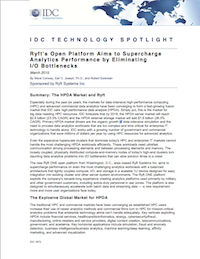Many organizations follow an old trend to adopt AI and HPDA as distinct entities which leads to underutilization of their clusters. To avoid this, clusters can be converged to save (or potentially eliminate) capital expenditures and reduce OPEX costs. This sponsored post from Intel’s Esther Baldwin, AI Strategist, explores how organizations are using converged HPC to combine HPC, AI, and HPDA workloads.
Using Converged HPC Clusters to Combine HPC, AI, and HPDA Workloads
High Performance Data Analysis
The traditional HPC and commercial markets have been converging as established HPC users increase their use of newer analytics methods and commercial firms turn to HPC for mission-critical analytics problems that enterprise technology alone can’t handle adequately. Key verticals exploiting HPDA include financial services, healthcare/bioinformatics, energy, cybersecurity/fraud, manufacturing, online retailers and service providers, digital content creation, telecommunications, government, and academia. Key horizontal applications include simulation, fraud and anomaly detection, business intelligence/business analytics, machine learning/deep learning, affinity marketing, and advanced visualization.
Video: Barry Bolding from Cray Presents: HPC + D + A = HPDA?
“Pre-integrated with the Hadoop and Spark frameworks, the Urika-XA system combines the benefits of a turnkey analytics appliance with a flexible, open platform that you can modify for future analytics workloads. This single-platform consolidation of workloads reduces your analytics footprint and total cost of ownership.”






